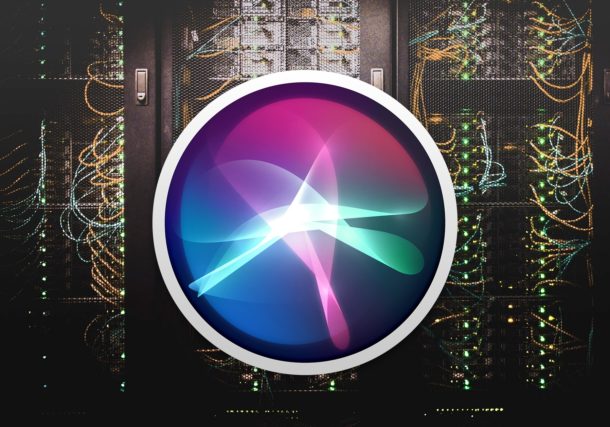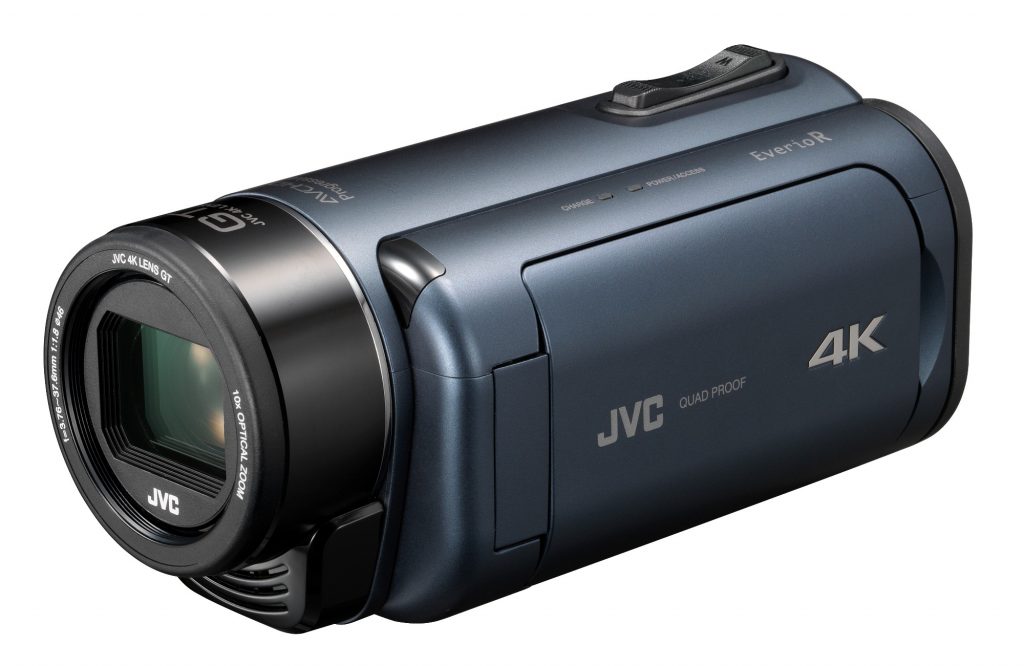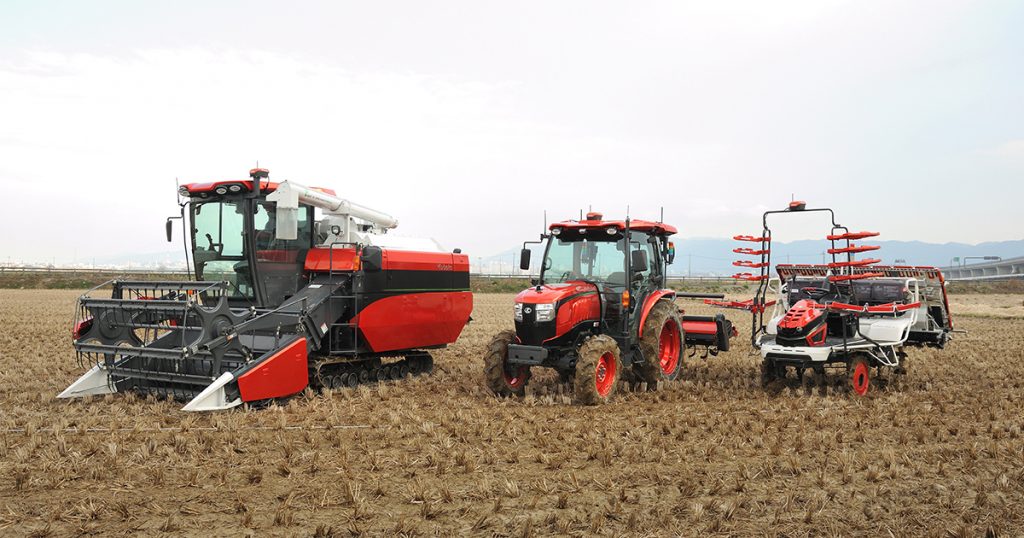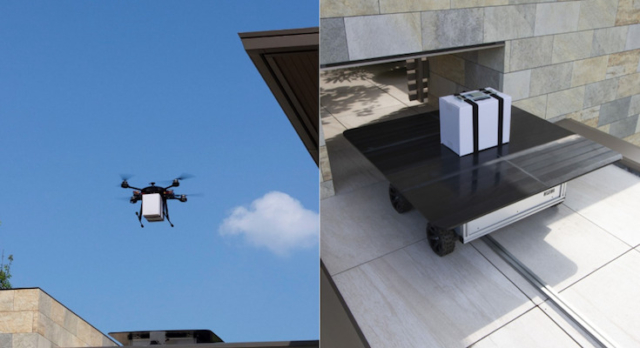Edge AI has been attracting attention in recent years. The edge AI market is expected to grow from just under 4.3 billion yen in FY2020 to 66.4 billion yen in FY2030.
Unlike conventional AI, edge AI, which does not need to process information in a cloud environment, can perform rapid processing using only devices, and its use will expand, especially in areas where immediate response is required.
Therefore, it is very compatible with IoT, and it is expected that the importance of edge AI development will increase as IoT technology grows and expands.
Contents
- What is edge AI?
- Difference between edge AI and cloud AI
- Edge AI divided into two types
- Relevance between Edge AI and IoT
- Advantages of using Edge AI
- Processing in real time
- Communication cost savings
- Enhanced security
- Disadvantages of using Edge AI
- Difficult to handle large scale
- System complexity
- 5 usage scenes
- Surveillance camera: Avinton Inc. | Edge AI camera
- Autonomous driving technology: Headwaters | Development of SLAM
- Smartphone: Apple | Siri on iPhone
- Human behavior analysis: NEC Corporation (NEC) | Human behavior analysis service
- Congestion status distribution: NTT DoCoMo | Congestion measurement AI
- Top 10 Case Studies of Companies Using Edge AI
- NEC | Utilized for human behavior analysis service
- JVC KENWOOD Corporation|Used in cameras
- Yahoo Japan Corporation | Utilized in algorithms
- Konica Minolta, Inc.|Used for sensor data
- Kubota Corporation|Used for automation of agricultural machinery
- Sony Group Corporation | Utilized for grazing cattle management
- Toshiba Corporation|Used for speech recognition
- Misawa Homes Co., Ltd. | Utilized for delivery system
- NTT DOCOMO, INC. | Utilized for video data
- Hokuyo Bank, Ltd.|Used for fraud prevention
- Edge AI processor
- GPU type
- ASIC type
- FPGA type
- The future of Edge AI
- summary
What is edge AI?
Edge AI is, as the name suggests, AI installed at the edge. The edge here refers to cameras, cars, and mechanical devices in factories, and it is a technology that directly loads AI into such edge terminals and processes information.
Here, we will introduce “the difference between edge AI and cloud AI,” “types of edge AI,” and “benefits of edge AI.”
Difference between edge AI and cloud AI
In contrast to edge AI, cloud AI sends a large amount of data to a data center through a network and uses the hardware (CPU and GPU) in the data center for high-speed learning.
Many general AI, including GAFA services such as Google and Amazon chatbots, are provided as cloud-type AI.
Edge AI divided into two types
I explained the difference between cloud AI and edge AI, but there are actually two types of edge AI.
- A type that performs only inference (judgment) on edge AI and updates learning data and models by connecting to the cloud
- Completely independent type that performs inference and learning on edge AI and does not require connection to the cloud
are two.
Machine learning techniques such as deep learning require enormous amounts of data processing, so learning on edge devices requires a long learning time.
Therefore, it is common to perform only the inference (judgment) part that requires real-time performance on the edge device side and perform learning on the cloud.
Relevance between Edge AI and IoT
According to the Ministry of Internal Affairs and Communications’ 2020 Information and Communications Status Report, the spread of the new coronavirus infection will make IoT an indispensable technology for maintaining daily life and economic activities.
IoT is an abbreviation for Internet of Things, and it is a system in which various “devices” are connected to the Internet and mutually controlled by exchanging information. In recent years, smart speakers and smart home appliances linked to smartphones have become popular.
So what is the relationship between Edge AI and IoT?
For example, it will be possible for IoT devices to collect data and statistically process it using AI, or to install learned models (AI) on IoT devices. In this way, it can be said that edge AI and IoT are closely related.
Advantages of using Edge AI
There are three advantages of using Edge AI.
- Processing in real time
- Communication cost savings
- Enhanced security
Processing in real time
In the case of cloud AI, it takes time to process the data sent from the terminal and then send it to the terminal again.
With the spread of IoT, the need to process huge amounts of data in real time has increased, and edge AI has come to attract attention. Edge AI embedded in terminals closer to the site can process faster than cloud AI.
Communication cost savings
When sending data accumulated on a terminal to the cloud, it is possible to reduce costs by sorting out unnecessary data.
Communication costs are also incurred when developing AI. AI development costs a lot of money, but edge AI can be used on various devices, so there is no need to develop a lot of AI, so it can be developed at low cost.
Enhanced security
Even for data management, which always has privacy issues, it is excellent from the viewpoint of information protection because it does not send data to the cloud and only processes it within the terminal, reducing the number of unauthorized access machines. Yes.
Disadvantages of using Edge AI
While there are advantages, edge AI also has disadvantages. There are two disadvantages:
- Difficult to handle large scale
- System complexity
Difficult to handle large scale
Terminals equipped with edge AI are designed with low resources in order to keep the cost per unit down, and do not have powerful resources like servers. For this reason, it is not good at performing large-scale processing like cloud AI.
System complexity
Terminals used for cloud AI mainly collect data and transfer it to the cloud, but terminals used for edge AI, which can be completed at the terminal, have a complicated system.
5 usage scenes
So, in what situations is edge AI actually used? Here, we introduce five practical examples of using Edge AI.
- Surveillance camera: Avinton Inc. | Edge AI camera
- Autonomous driving technology: Headwaters | Development of SLAM
- Smartphone: Apple | Siri on iPhone
- Human behavior analysis: NEC Corporation (NEC) | Human behavior analysis service
- Congestion status distribution: NTT DoCoMo | Congestion measurement AI
Surveillance camera: Avinton Inc. | Edge AI camera
Avinton leverages edge AI for surveillance cameras.
By using an AI camera, it will be possible to detect, monitor, and analyze what you want AI to automatically detect instead of the human eye. Advanced image analysis and object detection technology can be used to improve efficiency and safety at manufacturing sites and in marketing activities, making it possible to perform analyzes that were not possible with the naked eye.
Autonomous driving technology: Headwaters | Development of SLAM

Headwaters entered the field of autonomous driving in 2017, developing SLAM (Simultaneous Localization and Mapping), which performs self-localization and environmental mapping at the same time. Using edge AI, we are spreading the use of real-time image analysis for automatic driving, real-time data conversion in sports, and prediction by machine learning.
Smartphone: Apple | Siri on iPhone

Smartphones are the most familiar devices used by many people. Currently, cloud AI is used for voice assistants on smartphones, such as Siri on the iPhone. However, it is expected to switch to edge AI in the future.
Human behavior analysis: NEC Corporation (NEC) | Human behavior analysis service
NEC Corporation is involved in a number of edge computing solutions, one of which is a “human behavior analysis service that utilizes image analysis technology.”
With this service, it is now possible to analyze the behavior of shoppers up to the point of purchase, as well as the behavior of non-purchasers who left without buying anything, which could not be analyzed in the past. This technology utilizes image analysis technology capable of extracting flow lines through human detection and tracking.
Congestion status distribution: NTT DoCoMo | Congestion measurement AI
This app called “Congestion Measurement AI” can measure data such as the number of people, locations, and density captured by the camera in real time.
As a result, it is now possible to measure the congestion status of public institutions such as stations and airport facilities, outdoor events and exhibitions, as well as human traffic surveys, and the congestion status of commercial facilities, smart cities, and urban development.
Top 10 Case Studies of Companies Using Edge AI
Some companies are leveraging Edge AI. Here are 10 companies.
- NEC | Utilized for human behavior analysis service
- JVC KENWOOD Corporation|Used in cameras
- Yahoo Japan Corporation | Utilized in algorithms
- Konica Minolta, Inc.|Used for sensor data
- Kubota Corporation|Used for automation of agricultural machinery
- Sony Group Corporation | Utilized for grazing cattle management
- Toshiba Corporation|Used for speech recognition
- Misawa Homes Co., Ltd. | Utilized for delivery system
- NTT DOCOMO, INC. | Utilized for video data
- Hokuyo Bank, Ltd.|Used for fraud prevention
NEC | Utilized for human behavior analysis service
NEC’s human behavior analysis service sends camera images to Edge AI, extracts people from the camera images, predicts their movements, and tracks them. In addition, since the captured camera images and the data created by the analysis engine are discarded on the spot and only the coordinate data of the extracted person is saved, there is no data that can identify the individual. .
JVC KENWOOD Corporation|Used in cameras

Unlike conventional cameras that perform AI processing of video and images on the server or cloud side, JVCKENWOOD Corporation’s cameras are characterized by performing AI processing on the edge (camera) side. Therefore, only the processing results are sent to the server or cloud, which can be expected to improve processing speed and reduce the risk of information leakage.
Yahoo Japan Corporation | Utilized in algorithms
At Yahoo Japan Corporation, algorithms are being used for Yahoo! Chiebukuro’s real-time judgment of inappropriate posts, Yahoo!
Konica Minolta, Inc.|Used for sensor data
At Konica Minolta, Inc., we combine device implementation technology that collects high-quality image data from the site (edge), an AI platform that integrates various sensor data and performs advanced recognition and judgment, and an “image technology” that combines these differentiation technologies. We are promoting the development of IoT/AI technology.
Kubota Corporation|Used for automation of agricultural machinery

Kubota Corporation aims to develop a tractor that can operate unmanned and realize digital agriculture that makes full use of big data. By attaching a high-definition camera to the tractor and making full use of the high-speed communication standard “5G”, we aim to realize an even higher level of unmanned autonomous driving in 10 years.
Sony Group Corporation | Utilized for grazing cattle management
Sony Group Corporation has built a system that enables management work to be realized at low cost. PETER consists of a collar-type device attached to a grazing cow and a cloud application. The collar-type device is edge AI, and can estimate complex posture information such as drinking water, eating, standing, and prone positions of grazing cows by AI processing. As a result, AI can reduce labor costs by managing cows instead of humans, making it possible to keep costs down.
Toshiba Corporation|Used for speech recognition
Toshiba Corporation has developed speaker recognition AI. This AI has a speech keyword detection function that can operate at high speed even on a terminal. With this technology, the home appliance does not need to be connected to the network, and in addition to registering the speaker with three utterances, it is possible to operate it by voice and change the movement of the device according to the speaker. will be
Misawa Homes Co., Ltd. | Utilized for delivery system

A mobile drone port and a corresponding drone delivery system have been implemented in a concept house that leads to a sustainable future built by Misawa Homes Co., Ltd. Equipment that can deliver packages by drone reduces the frequency of going out for the elderly and people with physical disabilities, and is a lifestyle that meets the needs of order delivery of daily necessities and medicines for people who have difficulty going out due to nursing care or childcare. It also has functions designed for
NTT DOCOMO, INC. | Utilized for video data
NTT DOCOMO, INC. has developed “EDGEMATRIX” as a video edge AI platform. This is a platform that makes it easy to introduce video solutions that utilize edge AI that can quickly process huge amounts of data.
Hokuyo Bank, Ltd.|Used for fraud prevention
Hokuyo Bank, Ltd. uses surveillance cameras to detect the pose of a person making a phone call in front of an ATM by skeletal estimation. And if there is any suspicious movement, the staff in the bank will be notified by patrol lamp. Bank transfer scams can be prevented by having the staff speak appropriately according to the situation.
Edge AI processor
A processor is, simply put, “a part that becomes the brain for AI to perform processing”.
Edge AI is installed in the terminal, Cloud AI is installed in the server, and there are various types.
The figure comparing performance and power is on the left. The figure on the right is a comparison of cost performance (ratio between performance and power consumption) and versatility based on the figure on the left. Please take this as an example, as the relationship may change with the introduction of new products.
Compute processors used at the edge are valued for their low power consumption.
Therefore, looking at the above figure, we tend to think that ASICs should be used because they consume less power and have good cost performance. In some cases, the quality of a product cannot be measured by cost performance alone.
GPU type
The GPU type is suitable for IoT and has versatility.
Products with low power consumption and miniaturization by SoC (system on chip) are also seen here and there. An example is NVIDIA’s Tegra. However, the problem is that it consumes a lot of power.
ASIC type
For specific applications, the ASIC type wins.
ASICs are by far the most power efficient when using a particular algorithm for a period of time. However, because it is specialized, it may not be able to cope with recent changes in algorithms.
FPGA type
The FPGA type is characterized by the flexibility to immediately implement and deploy algorithms that are growing day by day. However, it is basically slow and consumes a lot of power, so it is necessary to consider if performance is important.
Since there are a wide variety of products in the area of processors, which are the key to edge AI, it is necessary to carefully compare and consider which computational processor best suits your needs.
The future of Edge AI
Highly versatile edge AI, which can be completed on-site, can be processed in real time, and can be used on various devices, will likely be applied in a wider range of fields in the future.
It is necessary to pay close attention to how edge AI, which can be applied in any field such as medicine, construction, and local government, will develop in the future.
summary
Edge AI is currently a hot topic. This article is intended to give you a rudimentary knowledge of Edge AI.
Among various AI-related technologies, it is said that it will be difficult for Japanese companies to catch up with GAFAM and others with cloud-based AI. On the other hand, edge AI requires embedded technology, and since this is an area where Japanese technology can be used, there is a possibility that Japan will be able to compete globally in edge AI. By making full use of embedded technology, which has been a specialty of Japan over its long history, in edge AI, many world-class products may be born in the future.